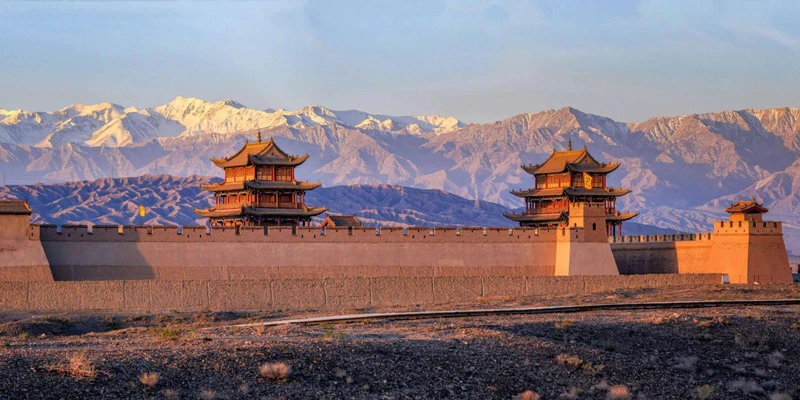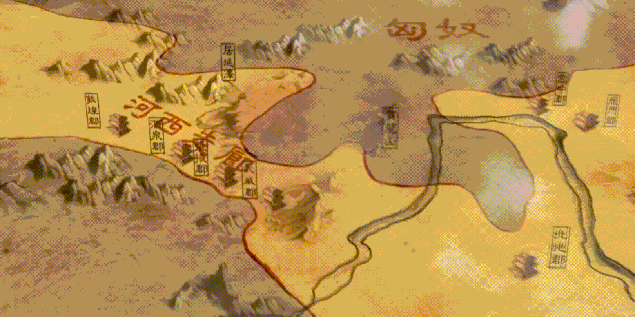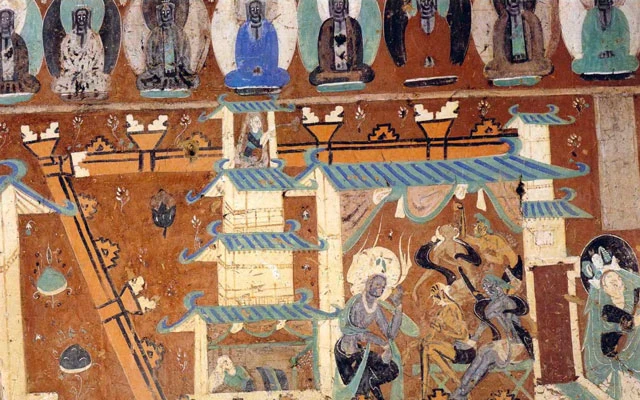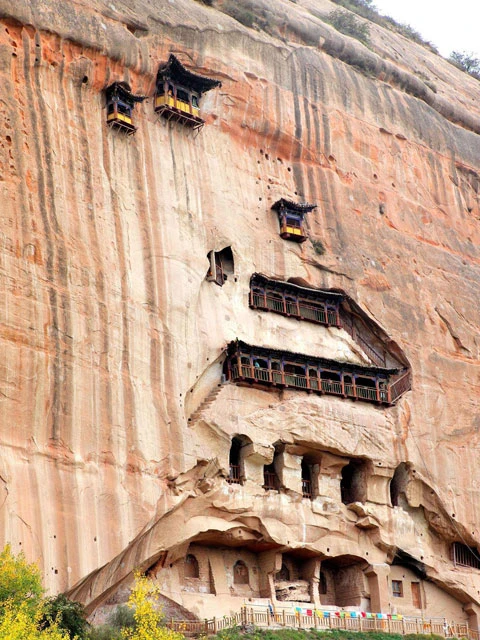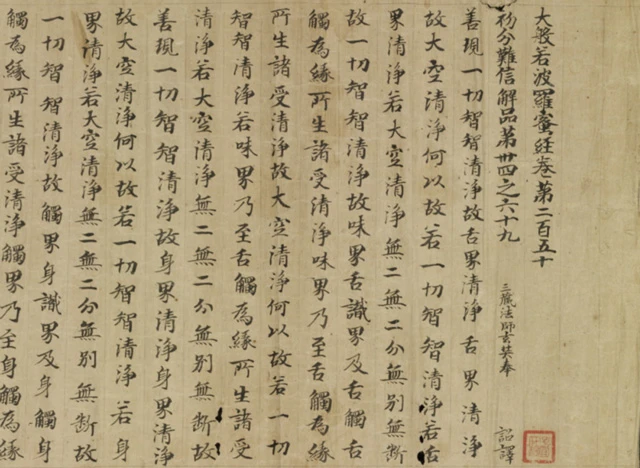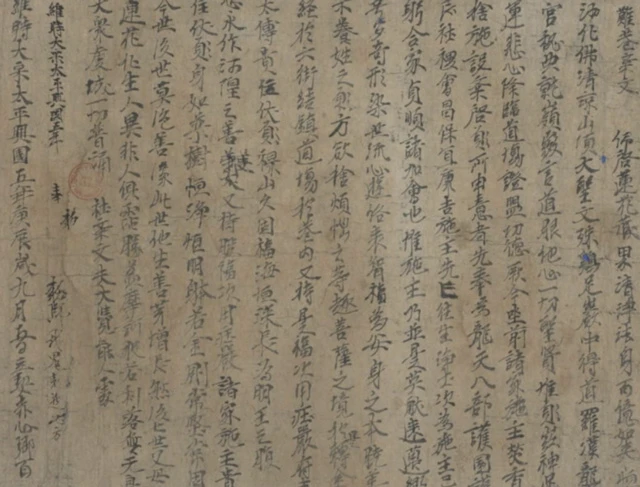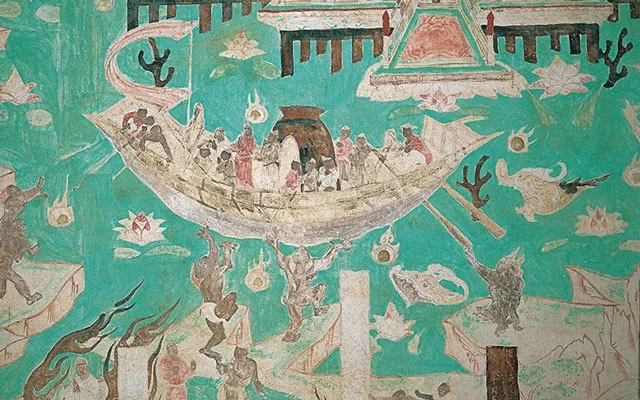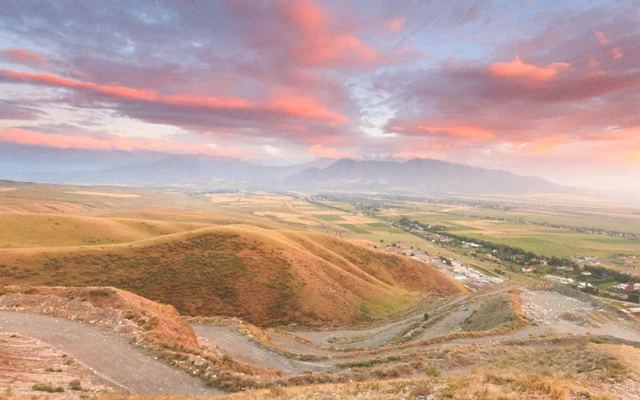The famous scenic spots in China are not only material existences, but also products of writing. The strokes of history and poetry give them meaning and provide us with a way to observe them. The Hexi Corridor is characterized by religious devotion, flourishing trade routes, and splendid culture.
The Dream of Emperor Wu
In 112 BC, Emperor Wu of the Han Dynasty, Liu Che at the age of 45 went on an inspection tour to the Yellow River bank in Jingyuan County, Gansu Province. This was his only time being so close to the Hexi Corridor. Although he never set foot on the Hexi Corridor during his lifetime, one can imagine that he must have had many magnificent dreams about it; dreams filled with vast Qilian Mountains and everlasting achievements.
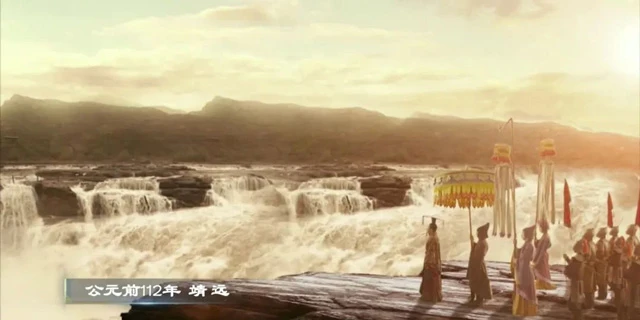
Emperor Wu
Beyond the Yellow River lies a corridor-like landform that gave birth to the most vivid name for this region - "Hexi Corridor". West of the Yellow River, shaped like a corridor, so the Qilian Mountains, Wuqiao Mountain and Longshou Mountain, Haili Mountain, Mazong Mountain, the vast land between the two mountains has the most graphic name "Hexi Corridor". Dozens of inland rivers originating from Qilian Mountains converge into major water systems such as Shiyang River, Heihe River, and Shule River, irrigating oases after oases and bringing vitality to this originally desolate land.

Qilian Mountains
From Spring and Autumn period through Warring States period until early Western Han Dynasty, various nomadic tribes such as Qiang people, Yuezhi people, Wusun people, and Xiongnu people thrived in this natural landscape. History quietly chose Emperor Wu as its chronicler for him to start writing about the cultural landscape in Hexi Corridor. From then on it became unstoppable leaving imprints from diverse cultures behind.
The powerful Xiongnu tribe was a nightmare for six generations of emperors in Western Han Dynasty; however Liu Che who became emperor after these six generations was determined to change this. In his dreams, the Han Dynasty should "By expanding the vast territory that stretches for thousands of miles, various countries with different languages and customs would come to submit themselves. In this way, the prestige and benevolence of the Han Dynasty would spread throughout the four seas."
The first person who brought him a glimmer of hope was Zhang Qian. In 139 BC, when Liu Che was only 18 years old he decided to send Zhang Qian at the age of 26 on a diplomatic mission through Hexi Corridor to unite with Yuezhi tribe which had been driven out by Xiongnu tribe in order to jointly counterattack Xiongnu.
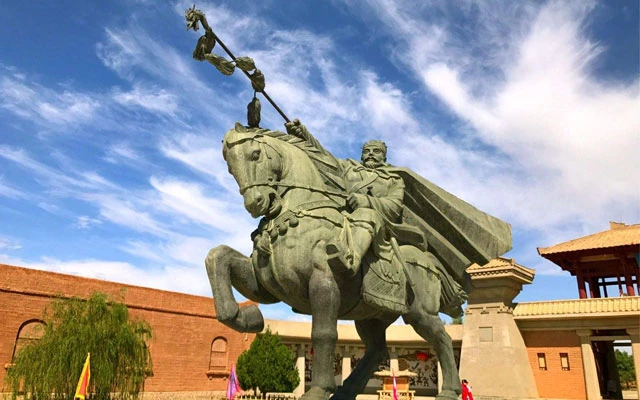
Zhang Qian
Ten years passed without any news from Zhang Qian and Liu Che could no longer wait. In 129 BC, he resolutely launched the first comprehensive counteroffensive against Xiongnu by Han Empire. Four armies attacked simultaneously while General Wei Qing led his troops straight towards Longcheng - the holy land of Xiongnu tribes.
Although Han Empire gained capabilities to fight against Xiongnu, the situation was not optimistic; however what surprised everyone was that in 126 BC, Zhang Qian finally returned bringing back information about Western Regions, broadening the vision of entire empire and providing valuable intelligence and confidence needed for defeating Xiongnu.
The second name destined to be closely connected with Hexi Corridor was Huo Qubing. In 121 BC at the age of 36 Liu Che sent Huo Qubing who was only 20 years old at that time on three military campaigns in Hexi region ultimately reaching as far as Qilian Mountains. He annihilated or surrendered nearly one hundred thousand people belonging to various nomadic tribes inhabiting Hexi region making it part of Han territories.
Ten years later four prefectures were established in Hexi: Wuwei, Zhangye, Jiuquan, Dunhuang. Emperor Wu established also built two strategic passes: Yangguan Pass and Yumen Pass. At this point, his dream of Hexi Corridor seemed to have been fulfilled. However, defending what has already been achieved is more difficult than creating something new.
The Great Wall extended to the Hexi Corridor forming a defensive system along the Hexi region. Policies such as garrisoning troops for reclamation and border defense were implemented successfully. Tens of thousands of officials and soldiers were stationed in the Hexi Corridor; they worked on farming when there was no war, fought when there was one. This not only ensured peace within their borders but also promoted agricultural development in Hexi.

The Han Dynasty Great Wall site
Hexi Corridor witnessed the brilliance of the Han Dynasty. During Emperor Xuandi period, Hexi Corridor had already become a glorious and flourishing scene. At this point, Emperor Wu's dream about Hexi came to an end but it marked just a beginning for the glory of Hexi Corridor.
Corridor of Buddhist Art
What is remarkable about the continuation of the Hexi Corridor is the destined connection that was established when Buddhism was introduced to China. During the Eastern Han Dynasty, Buddhism was brought into China from the Western Regions accompanied by the sound of galloping horses.
The Hexi Corridor, located at the forefront of Buddhist spread from the Western Regions to inland China, had already established a strong social foundation. By the time of the Western Jin Dynasty, Buddhism flourished even more in the Hexi Corridor. Many monks from Khotan and Kucha came here to preach and translate scriptures. Monks from Liangzhou (present-day Wuwei) also traveled to Kucha or India for further studies, accumulating a rich Buddhist culture.
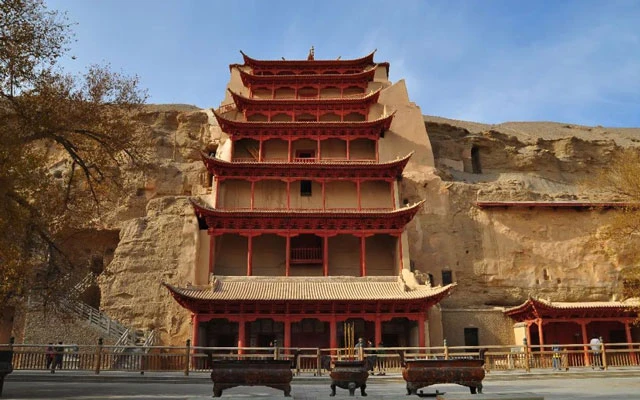
Mogao Caves
During the chaotic period of Wei-Jin Northern and Southern Dynasties that spanned several hundred years, political power in Hexi constantly changed hands. However, not only did Buddhism thrive here but it also gave birth to magnificent Buddhist art.
In 366 AD during Qian Qin period when Di tribe held power over this region, nothing special happened that year except for an event involving a monk named Le Zun who went on pilgrimage beneath Sanwei Mount in Dunhuang and witnessed a golden light shining brilliantly amidst sunset glow on top of mountain as if thousands Buddhas were appearing before him. Deeply moved by this sight , he then proceeded carving out first cave temple on cliff face near Mingsha Mountain which marked humble beginning today's world-renowned Mogao Grottoes in Dunhuang.
Just mentioning "Dunhuang" is enough; there is no need for beautiful words or sentences to describe how vivid its architecture, sculptures, and paintings are. Flying apsaras dance before your eyes while Buddha images depict themselves. Simply because these two words themselves are legendary, the act observing them becomes like making pilgrimage. Mogao Grottoes being called art is not a form of praise, but rather it's synonymous with art itself.
In 401 AD, Mongolian people Juqu Mengxun established state in Hexi called North Liang. Being an advocate for Buddhism, he heard that eminent monk Dharmakṣema was in Hexi and invited him to spread the dharma in Liangzhou. Kumarajiva introduced meditation as the best way to study Buddhism, thus promoting its practice.
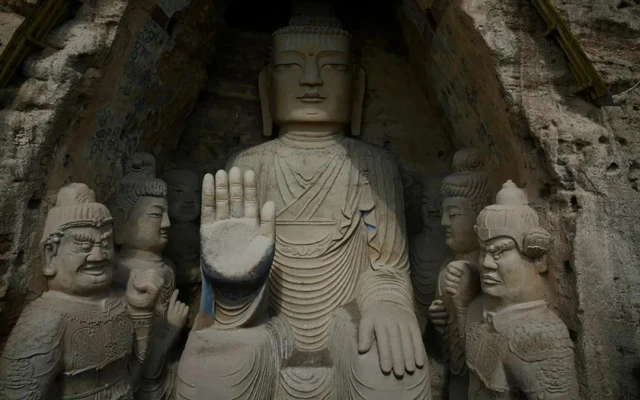
Tiantishan Grottoes
Meditation requires a pure place, and cave temples are ideal choices. The demand gave rise to the construction of cave temples, and thus Tiantishan Grottoes were born about 90 kilometers southeast of Wuwei. As one of China's earliest excavated caves, Tiantishan Grottoes earned the name of "the ancestor of grottoes". It represents not only early Chinese grotto art but also serves as the origin for Yungang Grottoes and Longmen Grottoes.
In same year when North Liang established, Yao Xing, the second ruler of Qiang ethnic regime Later Qin invitation Jiumo Losh entered Chang'an, organizing large-scale translation efforts. Chinese Four Great Grottoes, Tianshui Maijishan Grottoes was very likely built under Yao Xing's leadership.
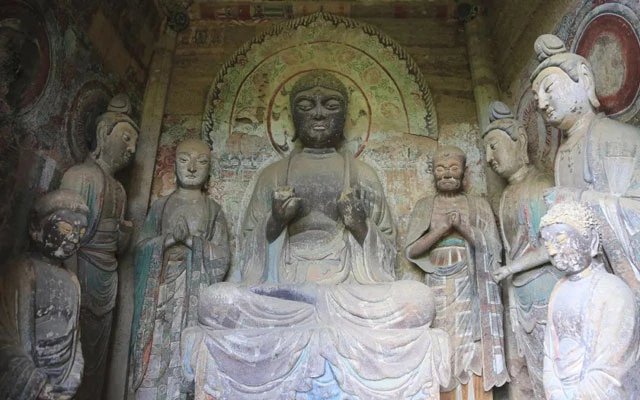
Maijishan Grottoes
Over the course of more than ten dynasties, Maijishan has been excavated and repaired, making it a large-scale cave temple that ranks after Mogao Grottes in Hexi Corridor and surrounding areas. Characteristics of statues from different periods have been preserved throughout over thousand years. Earning fame as "Eastern Sculpture Exhibition Hall".
King Qifu Chipan of Western Qin State also adhered faithfully to Buddhism. His name is connected with Bingling Temple which is located about 35 kilometers southwest of Yongjing County in Gansu Province.
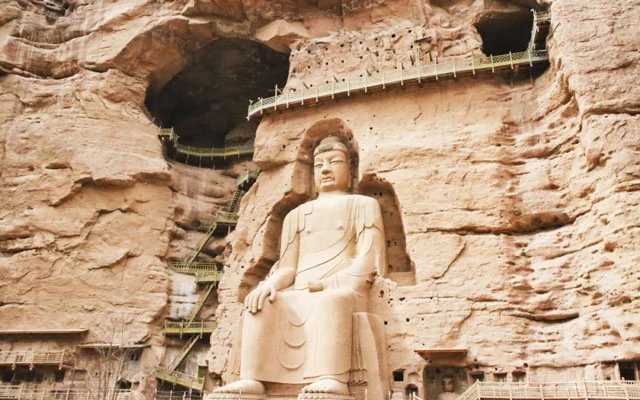
Bingling Temple Grottoes
Bingling Temple has always been shrouded in a mysterious aura. What is even more significant is the inscription found in Cave 169 which states "建弘元年岁在玄枵三月廿四日造." "建弘 (Jianhong)" refers to Qifu Chipan's reign title and "建弘元年, the first year of Jianhong" corresponds to 420 AD.
This is the earliest definite dating evidence found among Chinese grottoes, carrying with it the weight of time. In addition to these mentioned caves, there are Yulin Grottoes, Western Thousand Buddha Caves, Wenshu Mountain Grottoes, and other precious gems scattered along Hexi Corridor. For thousands of years, they have sung praises to this "Corridor of Buddhist Art", bringing solace to people amidst turbulent times by upholding pure thoughts within their hearts.
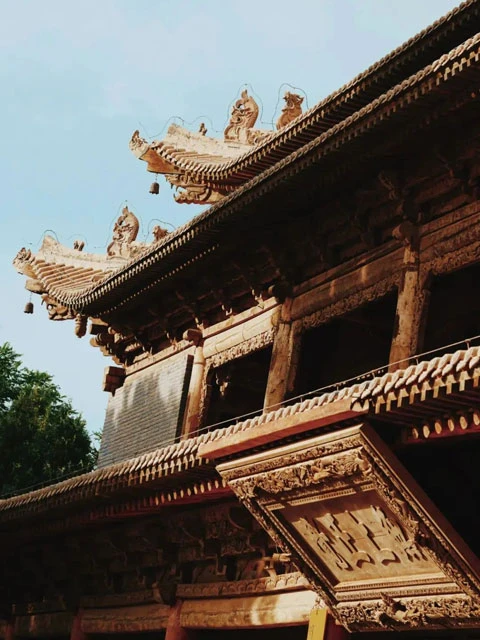
Wenshu Mountain Grottoes
Fortress of the Silk Road
The Hexi Corridor, as the only passage of the Silk Road leading to the China Central Plains, is undoubtedly a golden location for this trade route. Therefore, when unification once again descends upon the land of China, what kind of scene will unfold? The Sui Dynasty, which ended an era of chaos, recognized the importance of silk road trade. Emperor Yang Guang wanted to revive and restore the glorious silk road trade that had been temporarily interrupted. Thus, he dispatched his capable minister Pei Ju to govern the western regions.
Wise and capable Pei Ju realized that the Hexi Corridor was indeed a vital gateway on the Silk Road towards central China. As a result, new commercial stations emerged along this corridor with policies conducive to commerce being implemented one after another.
These measures proved effective as trade and business flourished day by day. Emperor Yang Guang's enthusiasm for these western regions was ignited; in 609 AD he invited leaders from various Western Regions countries to participate in a month-long trading conference at Yanzhi Mountain outside Zhangye City. He traveled even further than Emperor Wu of Han did before him and set foot on the land of Hexi Corridor. This conference healed some wounds suffered by the Silk Road but it was merely a prelude to an enchanting performance.
Liangzhou in Hexi Corridor has always been considered as a crucial point on the Silk Road since the late Southern and Northern Dynasties period when it became populated by Sogdians people. During the Tang Dynasty era, Suzhou (now Jiuquan) and Shazhou (now Dunhuang) also became important settlements for these Sogdian merchants.
These Sogdians merchants truly deserved their reputation as key players along the Silk Road. Sogdian merchants possessed remarkable business acumen. They began learning about business from an early age. Sogdian merchants established their own commercial network and had a postal system that connected various settlements along the Silk Road, thereby monopolizing much of its trade. Sound similar to modern-day monopolistic conglomerates.
The flow of merchants including Sogdians through Hexi Corridor not only brought wealth but also facilitated cultural and artistic exchange and innovation. Music from the Western Regions mixed with that from inland China in Hexi Corridor, giving rise to new music styles such as "Xi Liang Yue" from Northern Wei dynasty until early Tang dynasty and "He Xi Hu Bu Xin Sheng" from flourishing Tang period until late Tang dynasty - melodies that were truly captivating.
During the Tang Dynasty, Dunhuang experienced its golden era with nearly half of Mogao Caves being constructed during this time. In the prosperous period of the Silk Road during the Tang Dynasty, Hexi Corridor was certainly not overshadowed either.
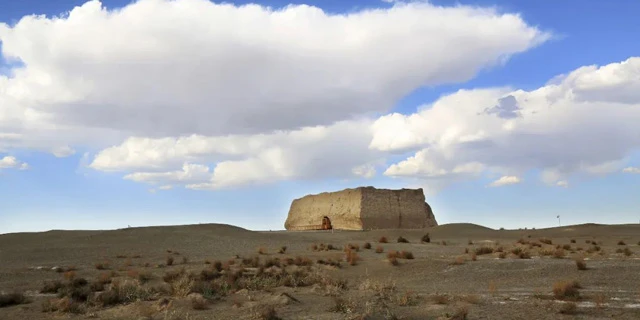
Yumen Pass
A New Era for the Hexi Corridor
The Silk Road gradually declined after the Song and Yuan Dynasties, and the Hexi Corridor fell into silence. In the 20th century, it once again began to attract the attention of people around the world. In 1900, while clearing sand at Mogao Caves, Daoist monk Wang Yuanlu accidentally discovered a hidden scripture cave. Inside this cave were over 50,000 precious artifacts including Buddhist scriptures from the 4th to 11th centuries, social documents, embroidery, silk paintings, and ritual objects. However, these valuable treasures remained unrecognized by anyone.
Foreign exploration teams discovered this splendid cultural wealth and took away numerous boxes of Dunhuang artifacts from Daoist Wang using mundane riches. As a result, Dunhuang artifacts scattered both domestically and overseas, still unable to be reclaimed today.
In the 1920s and '30s of last century, Japanese scholar Ishihama Juntaro and Chinese scholar Chen Yinke successively proposed the term "Dunhuang Studies". After several decades of development thereafter, Dunhuang Studies became currently recognized as an internationally renowned discipline named after a place.
Initially, Dunhuang Studies mainly referred to research on unearthed documents in Mogao Caves. With abundant new archaeological materials excavated in Dunhuang, and deepening research on it, the scope of Dunhuang Studies continued to expand. Li Zhengyu, a prominent figure in Dunhuang studies, argued that: "Dunhaung studies is essentially a study about ancient spiritual civilization as well as material civilization." What kind of charm does Dunhaung studies possess that can attract worldwide attention and gain such fame?
Located at a strategic point along the Silk Road, Dunhuang has an extremely unique historical status. The academic value of its manuscripts is also too significant; they are not only local documents but national ones, and even beyond China's territory. They encompass a wide range of subjects including religion, politics, economy, geography, nationality, and language. It is truly an academic ocean. The colorful cave art in Dunhuang magnifies the charm of Dunhuang studies infinitely.
Chang Shuhong, Duan Wenjie, Fan Jinshi. A generation after generation of guardians for Dunhuang, and each individual child of Dunhuang rooted themselves in the vast desert, guarding Mogao Caves. They have devoted their heart and soul to let Dunhaung Studies bear fruit.
Today, more than two thousand one hundred years have passed since the opening up of Hexi Corridor. With its diverse labels representing different ethnic groups and fields, Dunhaung carries a cultural landscape that bears historical traces. The initiation of China's Belt and Road Initiative once again demonstrates to the world that its value does not merely lie in history but also presents new opportunities for development.
Professor Ji Xianlin once said: "Dunhaung belongs to China, and Dunhaung Studies belong to the world." After The Belt and Road Initiative was proposed, Dunhaung Studies expanded towards a broader global stage. Directed by The Research Institute at Mogao Caves, archaeological excavations were conducted in the Central Asian region. Cooperation took place regarding archaeology, history, art, and cultural heritage protection with countries including India, Central Asia, and Afghanistan.

Starry sky over Mt Qilian
What does a temporary silence mean? The passage of time has already granted eternal life to the Hexi Corridor. Its future is immeasurable.
